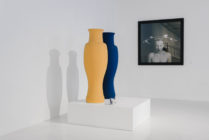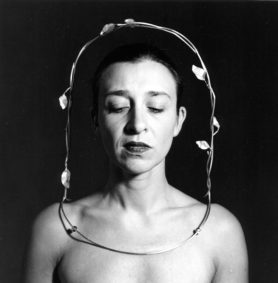Galleria 10 Corso Como opened to the public on December 18 the exhibition Andrea Branzi. Civilizations without jewels have never existed, curated by Alessio de’ Navasques and hosted until February 16, 2025.
Dear Shaded Viewers,
One year after his passing, the 10 Corso Como Gallery dedicates an exhibition to the Italian architect, designer, historian, and theorist Andrea Branzi. Presenting his radical vision, it begins from the design of gold and silver objects made in Belgium in the mid-nineties and collected in a retrospective exhibition at the Ghent Design Museum in 1998. Jewelry is the sublimation of a journey exploring the meaning of design as an evolution of the applied arts. It is a project that goes beyond the rigidity and self-referentiality of modernity and its relationship with the concept of realism through living and natural elements. There would be no civilization without jewelry: this assumption places the focus on the anthropological dimension of life and its secret and immaterial values of which the jewel, in its cultural and symbolic meaning, is still the bearer.
On a path that proceeds through signs and similarities, the exhibition presents works, documents, and drawings in a landscape of objects that counts upon the visitor’s intuition to interpret that “poetic habitat” of projects from different eras and seasons. Returning to the philosophy behind No-Stop City (1969-1971), the white space of the gallery is enhanced by a transformative flow of ideas in a continuous present, traveling beyond the boundaries between the domestic and urban space. Hybrid objects from the Wood and Stones series (1995) transmute into archetypal forms of the applied arts in Silver and Wood (1996). Then, as if in an alchemic process, they transform into precious gold and silver from Silver and Gold (1997) and arrive to the utopian project of the Grande Vaso installation in Ghent (1998). In a play of different correspondences and scales, the dematerialization of city spaces can be seen in the force of primordial nature in the work Trees & Stones (2012), as in the more recent Germinal (2022) or in the real birch trees of the Domestic Woods series (2023).
From the early 1990s to the mid-2000s, Andrea Branzi established a special relationship with Belgium and its cities. This led to several private and institutional commissions through his affiliation with Eddy François and Caroline De Wolf, the founders of the Casa Argentaurum gallery.
The first hybrid projects with blurred boundaries were born between Antwerp and Ghent: wooden lamps, stones cut to form boxes, and silver baskets in the Wood & Stones exhibition (1995) in which, as Branzi himself said, “Wood and stone bridge the gap between science and nature. These two different territories begin to fluidify within an idea that is no longer abstractly geometric.” Intertwined silver, baskets, and containers that seem to recall the functional and symbolic purity of the Shaker culture were conceived as the archetypes of historical shapes requiring an interpretation based on context.
Branzi had been studying the relationship between the applied arts and the city since the end of the 1970s, reinterpreting the domestic space through that heritage of symbols that the Bauhaus concept of unitary design and functionality had dispersed. In the Silver and Wood series (1996) – created for Casa Argentaurum – the traditional tea service with an elegant opaque patina unleashes its expressive force in the contrast between linear shapes and intersecting branches and plant fragments. With the famous series of seats – Domestic Animals (1984) – of which remarkable original examples of the period are on display – the idea of hybridizing industrial design with refractory and living materials aimed to create a space of tension between modernity and nature, breaking that self-referentiality and rigor that mark the project’s distance from every form of reality. In the monumental scale of the works Trees & Stones – presented in 2012 in New York in the exhibition with the same name at the Friedman Benda gallery, from which Stones 2A is on show – trunks and stones, in their uniqueness as natural archeology, become an almost sacred presence in comparison with industrial materials. A thought that evolves in one of the latest projects, Germinal (2023), presented in the same gallery, where the perfection of bamboo, compared to a forest of organ pipes, amplifies an idea of nature as an infinite architecture.
Gold and silver garlands, shimmering crowns and necklaces are the jewels that adorn the human body in a landscape, heightening its aura with leaves and natural elements and highlighting that mystical dimension of ornamentation in its primordial meaning as a means to bring humans closer to the divine. “They belong to anthropological culture more than to the goldsmith culture, and if there have been societies without cities and architecture, there have never been societies without jewelry; because they are, above all, the obvious sign of a magical elaboration of the human being, and the symbol of the search for a secret order in the laws of the cosmos,” wrote Branzi in an article that appeared in the magazine Interni in November 2005.
Shown at the Ghent Museum in 1998, the jewelry from the Silver and Gold series reunited again for this exhibition is the most obvious and valuable symbol of Andrea Branzi’s multifaceted and interdisciplinary thinking, which introduces the ineffability of mystery to question the prohibitions and limits of the geometric system of modernity.
Created in collaboration with Nicoletta Morozzi and Lorenza Branzi and with the Casa Argentaurume Friedman Benda galleries, the exhibition is divided into a path that aligns and places in dialogue works, documents, drawings and photographs. In the large and bright spaces of the Galleria di 10 Corso Como, the installation, conceived as a continuous flow, composes a landscape of objects extended over a period of time from the mid-eighties to the latest creations of 2023.
Later,
Diane








